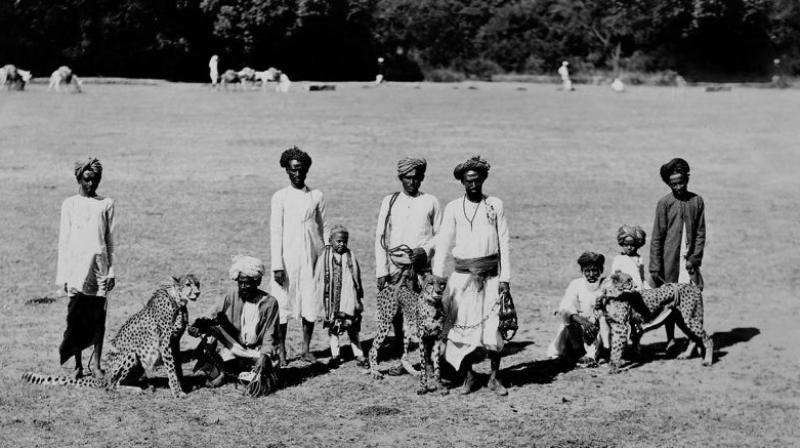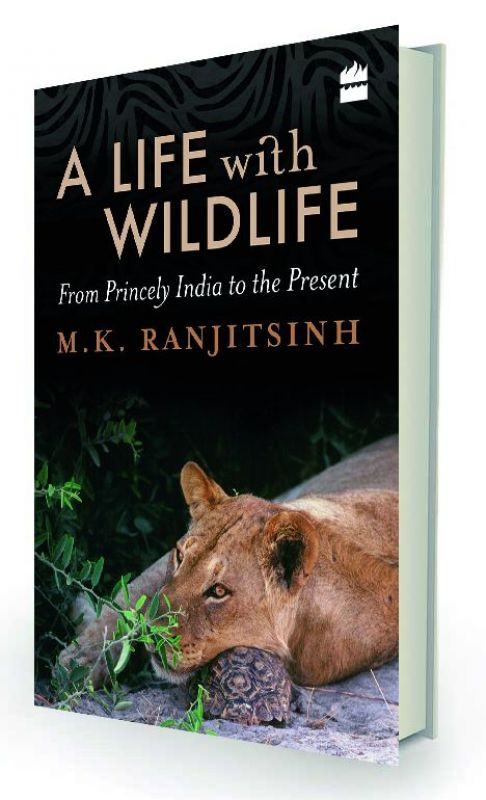Book Review: Protecting the future, preserving the past
A Life With Wildlife is filled with tit bits of information that will draw forth the Indian in you.

If you are interested in reading the wonderful story of Indian wildlife starting with the Princely states under the British, coming together of the diversity of our culture and our wilderness into an emerging democracy, then A Life with Wildlife written by the famed writer and conservationist, India’s first director of wildlife, M.K. Inderjitsinh is a must. The jungles and their wilds, once controlled by our monarchy, consequently decimated by the populace of a free democracy, forced India to embrace a harsh and rigid law. Many a person living around the forests then believed these laws would be nothing but porous regulations, compromised by corruption, leading to severe conflict. Whether their fears were justified or not is something that Indians will need to answer for themselves, yet these laws were essential for the very survival of our wildlife at that point in time. The book is an insight into how democratic India amalgamated its forest management with the diverse management policies of each state of the erstwhile royalty, culminating in many a Billy Arjun Singh tirade in support of Dudhwa, an exasperated Prime Minister and finally the Wildlife Preservation Act of 1972 (WLPA 1972) under the guidance of the author.
People instrumental in creating such policies were mostly subjected to localised experiences boxed in by an exclusionary mindset. This tunnel vision remains the greatest challenge to our wildlife till date. It was individuals like the author who saw the larger picture and dared to break free from traditional bureaucratic thinking, and in their own special way peeped into the future and saw the devastation of our natural resources. They then stood tall and fought for laws that would bring wildlife control back from the states into the hands of the Central government, with the final hope of giving this control to the people, when the time was right. This is the story, filled with anecdotes, each a jewel on its own, of the man who helped India achieve phase one of this unsurpassable goal and of the notable players that effected wildlife conservation pre- and post-Independence.
 A Life with Wildlife: From Princely India to the Present by M.K. Ranjitsinh HarperCollins, Rs 799
A Life with Wildlife: From Princely India to the Present by M.K. Ranjitsinh HarperCollins, Rs 799
Many question whether the policymakers knew the difference between protection and conservation for them to have chosen the more sinister and heinous approach to saving our wildlife. To this all I can say is read the book and you will get your answer. Personally, I have severe misgivings about the draconian WLPA 1972, though it was a much-needed beginning. The author, a quintessential erstwhile royal from Wankner, has discussed inclusionary management in the book through the eyes of the various princely states of India. The letter from Nawab of Junagadh to the British Political Agent in Rajkot is an excellent example. To say he didn’t know the difference would be a tall order. Had the author spoken of a stand alone conservation law instead four decades back, he would have risked everything for that could well have stalled the implementations of the WLPA 1972 itself and that certainly would have been disastrous; so devastating in fact that the tiger would have been extinct by now. Maybe India just wasn’t ready for such a conservation act that would force the officials to take the local populace along with them in trying to find solutions to our conservation woes.
Maybe at that point of time, with hardly any precedence of successful inclusionary forest management anywhere in the world, it was easier to draw a line on an invisible map and then guard this border with vengeance. Sadly, these arbitrary lines made the official the undisputed king of the forest and the poor citizens of India criminals, if they ever dared cross the divide without credentials. The forests, once so much an integral part of village life, suddenly became a symbol of oppression. These problem riddled Lakshman rekhas resulted in unprecedented conflict. Corruption would further deepen this crisis. The book addresses all these issues and more in its own delicate way. I grew up in the jungles’ as my grandmother was the ruler of Bhopal and I hear the author and his plea for change. His understanding of the ethos goes beyond compare. India was freshly out of colonial abuse where our resources were overtly depleted funding the crown of England.
The colonial age was an era where age-old inclusionary management policies were replaced by the harsh exclusionary policies of the crown. Post-Independence, the mindsets of our babus, trained by the gora sahib, remained autocratic and any law that would include the people would never have been permitted. This would need to be done, if ever, in phases. Phase one being the establishment of control on the forests through a harsh protection law, followed in due time by a dilution of official control via inclusionary phasing in of the law, where the villagers would be included in joint decision making.
A Life With Wildlife is filled with tit bits of information that will draw forth the Indian in you. Did you know that the state of Junagadh was given the right to immediate plebiscite whilst Kashmir was given the right to postpone a similar choice by 50 years? I didn’t, till I read this book. Be it the lives of Indian princess or the politicians of the era, be it notes on our cultural diversity that effected our wildlife (vegetarian rulers of Manipur that did not believe in killing an animal vs those that hunted), the life and times of the great cricketer Ranjisinhji, even the relocation of predators and the lack of proper wildlife census methods or the proverbial history of Kashmir and other princely states in India, it’s all there, waiting to be discovered. You will be shocked to read that a certain chief minister of J&K was instrumental in using his government to make extinct a species in a National Park for religious reasons.
The great advantage of reviewing a book on wildlife and conservation is that we get to share our ideas without writing a book, much to the chagrin of the author of course. I believe after three and a half decades of practicing real conservation, effecting thousands of lives in the process, we should be permitted that liberty. I would certainly love for every forest official and every one of you that loves wildlife to pick up A Life With Wildlife. It will enhance your knowledge and broaden your understanding of conservation for its only through conserving our natural resources can we protect them from abuse and devastation by a system mostly compromised and corrupted over time. Jai Hind!
Saad Bin Jung is a former international cricketer, writer, novelist, conservationist who runs camps and safaris in Africa

